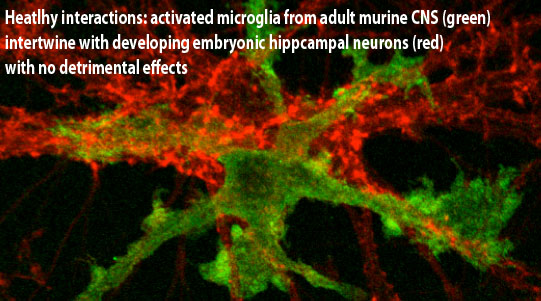Innovative Collaborative Research Applied to Problems of Brain Health and Disease
Center For Glial-Neuronal Interactions
Why Focus on Glial-Neuronal Interactions in CNS Health and Disease?
Brain and spinal cord function depends not only on neurons, but on glia. Glia are the non-neuronal elements of the central nervous system (CNS) and comprise approximately 90 percent of the cells within the CNS.
The advent of high resolution in vivo imaging has revealed that glia are constantly active in the healthy CNS. Genetic, molecular and epidemiologic studies have also revealed the prominent and often causative roles these cells can play in the pathogenesis of many common neurodegenerative and neurodevelopmental disorders including:
- Alzheimer's disease
- Autism-spectrum disorders
- Epilepsy
- Huntington's disease
- Ischemia (stroke)
- Multiple sclerosis
- Parkinson's disease
- Schizophrenia
- Traumatic Brain Injury (concussions)
Glial interactions with neurons also play critical roles in loss of function caused by spinal cord injury and traumatic brain injury. CGNI investigators are revealing routes and consequences of glial-neuronal interactions aimed at identifying risk factors as well as therapies for CNS disease and dysfunction.
CGNI Monthly Meetings
The Center for Glial-Neuronal Interactions hold regular CGNI meetings on the second Friday of each month from 3:30p.m. to 5:00p.m. at the Multidisciplinary Research Building, seminar room. For more information, please contact biomedsci@medsch.ucr.edu.
Donate to Support CGNI Researchers
We thank all past and current donors for their generous donations helping CGNI researchers pursue innovative collaborative and transdisciplinary research applied to problems of brain health and disease. Your donations will help us continue to do so in the future.

